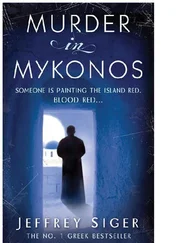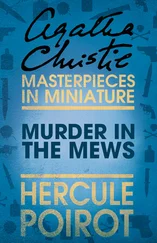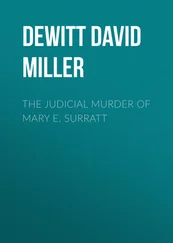Jeff Sherratt - Detour to Murder
Здесь есть возможность читать онлайн «Jeff Sherratt - Detour to Murder» весь текст электронной книги совершенно бесплатно (целиком полную версию без сокращений). В некоторых случаях можно слушать аудио, скачать через торрент в формате fb2 и присутствует краткое содержание. Год выпуска: 2011, Жанр: Криминальный детектив, на английском языке. Описание произведения, (предисловие) а так же отзывы посетителей доступны на портале библиотеки ЛибКат.
- Название:Detour to Murder
- Автор:
- Жанр:
- Год:2011
- ISBN:нет данных
- Рейтинг книги:3 / 5. Голосов: 1
-
Избранное:Добавить в избранное
- Отзывы:
-
Ваша оценка:
- 60
- 1
- 2
- 3
- 4
- 5
Detour to Murder: краткое содержание, описание и аннотация
Предлагаем к чтению аннотацию, описание, краткое содержание или предисловие (зависит от того, что написал сам автор книги «Detour to Murder»). Если вы не нашли необходимую информацию о книге — напишите в комментариях, мы постараемся отыскать её.
Detour to Murder — читать онлайн бесплатно полную книгу (весь текст) целиком
Ниже представлен текст книги, разбитый по страницам. Система сохранения места последней прочитанной страницы, позволяет с удобством читать онлайн бесплатно книгу «Detour to Murder», без необходимости каждый раз заново искать на чём Вы остановились. Поставьте закладку, и сможете в любой момент перейти на страницу, на которой закончили чтение.
Интервал:
Закладка:
We moseyed down the corridor, out of the ballroom, and headed straight for the bar.
CHAPTER 45
Almost immediately, the national newswires picked up the story of Earl Lee Sims stealing Raymond Haskell’s identity and getting away with it for almost three decades. By ten that night, reporters were camped in front of my apartment. Cruising down my street, I saw the media vans parked there and didn’t stop. I drove to my office on Cecilia St. and didn’t see any reporters around, so I parked and went in.
I sat at my desk in the dark, quietly thinking about the events that had happened earlier that night at the Ambassador. I thought about that look in Sims’s eyes when he asked me to kill him. Uh-uh, killing him would be too easy. There would be no long-term suffering, no payback for all that he had done, for the lives he’d taken-for the lives he had destroyed .
Turning on my desk lamp, I started to rearrange the stuff on my desk. Mrs. Hathaway’s shoebox sat next to a stale donut. I took out the old newspaper, the Shreveport Journal , dated June 11, 1945 and looked it over again.
There was a lot of news on the front page about the war raging in the Pacific. Page two had an article about movie queen Hedy Lamarr’s new baby. But what had caught my eye back at Sol’s office was an article with photos. The Associated Press piece had been put on the national wire.
The Journal picked up the story and carried it on page three. The headline: WAR HERO AND HEIR RETURNS HOME. The picture showed a close-up of Raymond Haskell stepping off a plane in Los Angeles. The article told about his final mission and his time spent as a POW. It went on to tell how he was the only survivor of the doomed aircraft. In smaller print the article listed the names of his crewmembers killed in action. The piece also listed the dead airmens’ next of kin. Among those allegedly killed was Earl Lee Sims. His only known relative was a sister, whereabouts unknown, named Vera Sims.
Then I pulled out the page torn from the 1945 motel guest register that Mrs. Hathaway must’ve stuck in the shoebox prior to giving it to her niece. I looked again at the two faded signatures on the paper: Al Roberts-and Vera Sims.
Unfolding the two small obituary clippings, I spread them on my desk. Both had a small picture of Sims, and each said essentially the same thing. Sergeant Earl Lee Sims, USAAF, was killed last week when the B-17 he crewed exploded over Germany after encountering heavy flak. Prior to his enlistment, Sims, a native of Caddo Parish, had been in trouble with the law. He had joined the army in order to avoid a long prison term…
Sol’s PR people had scheduled a press conference for me to meet with the media the following afternoon, a Monday. He explained that it would be the only way I’d get these guys off my ass, plus the publicity would do my firm good. I liked that idea.
The conference was held in the office parking lot. Rita, wearing a dark business suit and a white ruffled blouse, stood beside me at the makeshift podium, facing the journalists and TV cameras. Mabel sat at a small table we had set up near the entrance. She handed out factsheets to the reporters as they signed in. The TV camera lights snapped on and the conference got underway at exactly 2:06 p.m.
“How did Sims think he could get away with such an outlandish scheme, Jimmy?” a journalist from Newsweek asked.
“Well, he did get away with it for almost thirty years. But I don’t think he planned it that way at all. He just went with the flow.”
“What do you mean?”
“Here’s how Sims told it in his confession: After he bailed out of the B-17 over Germany, he knew he’d be captured eventually. He figured that he’d get better treatment in a German POW camp if he were an officer rather than an enlisted man. When he spotted Raymond Haskell on the ground wounded, he shot him in the head, exchanged uniforms, and stole his dog tags. So of course, when the Germans did, in fact, capture him, they logged him in as Capt. Raymond Haskell. When he was liberated at the end of the war in Europe, he wasn’t reunited with his original group. After a short stay in a military hospital in the States, he was sent to New York, where he received his discharge."
“If you look at the vital statistics, which we included in the fact sheet, you’ll see that Sims and Haskell were similar in size and weight,” Rita added. “And they were even similar in appearance: eye color, hair, and complexion.”
I continued: “When Sims returned to the States and read in the papers the account of his-or rather Haskell’s-heroic return, he found out a little about Haskell’s life. His mother was dead, and his father was in a coma, near death. He had no relatives, except for Charles Jr., who had been estranged from his father for years. Charles had run away from home when he was fifteen. The last time Charles had seen Raymond was when Raymond was twelve years old. The lawyers were looking for heirs. So Sims figured he’d show up-his discharge papers would prove his identity-and pick up as much cash as he could. Then he’d disappear. But when he found out that Charles had died and no one else had come forth to dispute his claim, he decided to stick around. Why settle for small change when so many millions were at stake?
“The only fly in the ointment for Sims, of course, was his sister, Vera.”
“Didn’t Raymond Haskell have any close friends, high school buddies who knew him well enough to spot a phony?” Stan Chambers from KTLA asked.
“Not really. His parents sent him away when he was a kid to a military academy in Roanoke, Virginia, then college at an Ivy League school. When the war broke out, he enlisted.”
“How’d Vera find out about her brother’s deception?”
“We can only surmise. But based on Sims’s confession, and what we were able to put together from what Charles Haskell Jr. had told Al Roberts during the drive across Arizona, we have a fairly good idea of how she knew about her brother’s activities. Vera saw the newspaper article about Raymond Haskell’s return from WW II and must’ve recognized her brother, a small-time crook who had joined the army to avoid prison. At that time she lived in Shreveport, same as Charles Haskell Jr., who was a big-time bookmaker. Vera didn’t know him personally, but she knew of him. After she showed him the paper, they headed off to L.A. together to confront the impersonator. Somewhere along the way they got in a fight. Charles Haskell Jr. kicked Vera out of the car in Arizona. But after he died, Vera saw an opportunity to cash in by blackmailing her brother.”
“My God, Sims murdered his own sister,” Jack Smith of the L.A. Times said.
“Yes, strangled her with his bare hands.”
“What happened after that?” someone from the back shouted.
“Sims got lucky. Soon after the murder the police picked up Al Roberts and charged him with the crime. Of course, Sims wanted Roberts to go directly to prison without a trial so that none of the stuff about Vera would come out. He knew the DA at the time, Frank Byron, would go along because Raymond’s father, Charles Sr., had been in the rackets before he died and had Byron on his payroll.”
“Is anyone going to look into the Byron/Haskell connection?”
“I don’t think so. Rinehart certainly isn’t going to dig up the past. Anyway, all the crimes Byron may have committed are beyond the statute of limitations.”
“How did the murdered woman who owned the motel…” The reporter looked at his notes. “…ah, Ida Hathaway, get involved?”
“Mrs. Hathaway had discovered Vera’s body. But before she called the cops, she scooped up some of Vera’s stuff and hid it in a shoebox. Included in the room were the old newspaper and some obit clippings. But Hathaway didn’t make the Sims/Haskell connection until almost thirty years later. She figured it out when she went through the shoebox retrieving some old phone bills for me. She matched Vera’s name on the hotel register with the name in the paper and deduced what Vera had been up to. That’s when she decided to blackmail Sims.”
Читать дальшеИнтервал:
Закладка:
Похожие книги на «Detour to Murder»
Представляем Вашему вниманию похожие книги на «Detour to Murder» списком для выбора. Мы отобрали схожую по названию и смыслу литературу в надежде предоставить читателям больше вариантов отыскать новые, интересные, ещё непрочитанные произведения.
Обсуждение, отзывы о книге «Detour to Murder» и просто собственные мнения читателей. Оставьте ваши комментарии, напишите, что Вы думаете о произведении, его смысле или главных героях. Укажите что конкретно понравилось, а что нет, и почему Вы так считаете.












